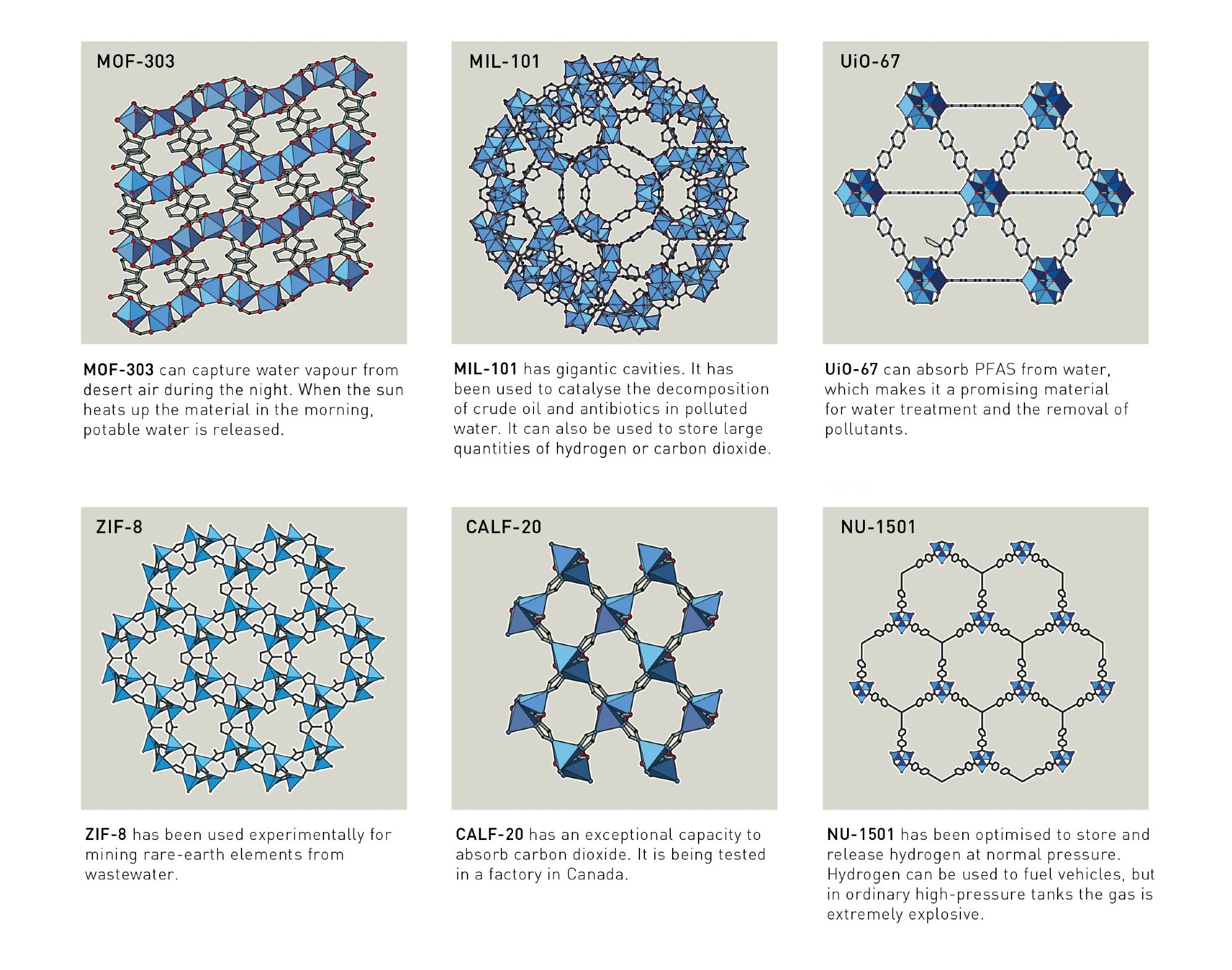The 2025 Nobel Prize in Chemistry has been awarded to Susumu Kitagawa (Kyoto University), Richard Robson (University of Melbourne), and Omar M. Yaghi (University of California, Berkeley) for their development of metal–organic frameworks (MOFs), molecular structures with porous architectures that create “rooms” for chemical reactions.
 Nobel Prize in Chemistry 2025. Image Credit: ©Johan Jarnestad/The Royal Swedish Academy of Sciences
Nobel Prize in Chemistry 2025. Image Credit: ©Johan Jarnestad/The Royal Swedish Academy of Sciences
The Nobel Prize laureates developed molecular structures with vast spaces that can contain gases and other substances. These metal-organic frameworks are able to collect water from desert air, trap CO2, store harmful gases, catalyze chemical reactions, and more.
Metal ions are connected by lengthy organic (carbon-based) molecules, creating large cavities in crystals through their organization.
These porous materials are metal-organic frameworks (MOFs). By altering the building blocks used, chemists can create MOFs that trap and store specific substances. They can do more than trap materials. MOFs can also catalyze chemical reactions and conduct electricity.
Metal-organic frameworks have enormous potential, bringing previously unforeseen opportunities for custom-made materials with new functions.
Heiner Linke, Chair, Nobel Committee for Chemistry, The Royal Swedish Academy of Sciences
MOFs were born in 1989, when Richard Robson experimented with using the natural features of atoms in a new way. He paired positively charged copper ions with a four-armed molecule, each of which had a chemical group at the end that was attracted to copper ions. They fused to produce a well-organized, spacious crystal—like a diamond with numerous cavities.
Despite its clear, immediate potential, Robson's molecular structure was unstable and rapidly collapsed. However, Susumu Kitagawa and Omar Yaghi continued where he left off, laying the groundwork for this building process. Between 1992 and 2003, they each made a succession of innovative discoveries.
Kitagawa demonstrated that gases can flow in and out of the structures, implying that MOFs might be made flexible. Yaghi developed an extremely stable MOF and showed that it can be tweaked via rational design to get new and desirable features.

Nobel Prize in Chemistry 2025. Image Credit: ©Johan Jarnestad/The Royal Swedish Academy of Sciences
Since their evolutionary findings, chemists have taken the laureates' learnings to create tens of thousands of distinct MOFs, each with their own capabilities. Some of them may help to solve some of humanity’s most pressing problems, with applications such as removing PFAS from water, breaking down pharmaceutical traces in the environment, absorbing carbon dioxide, and harvesting water from desert air.